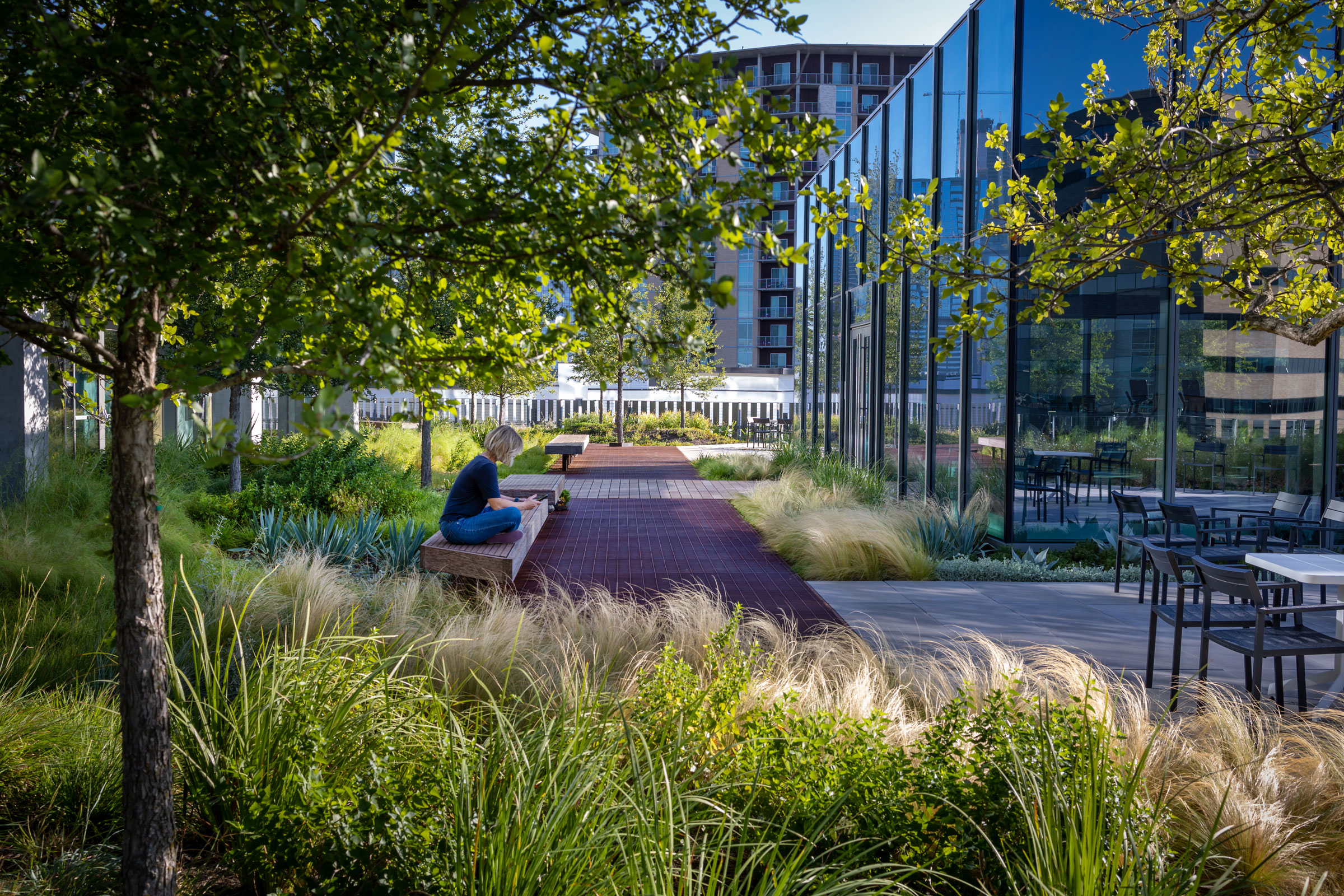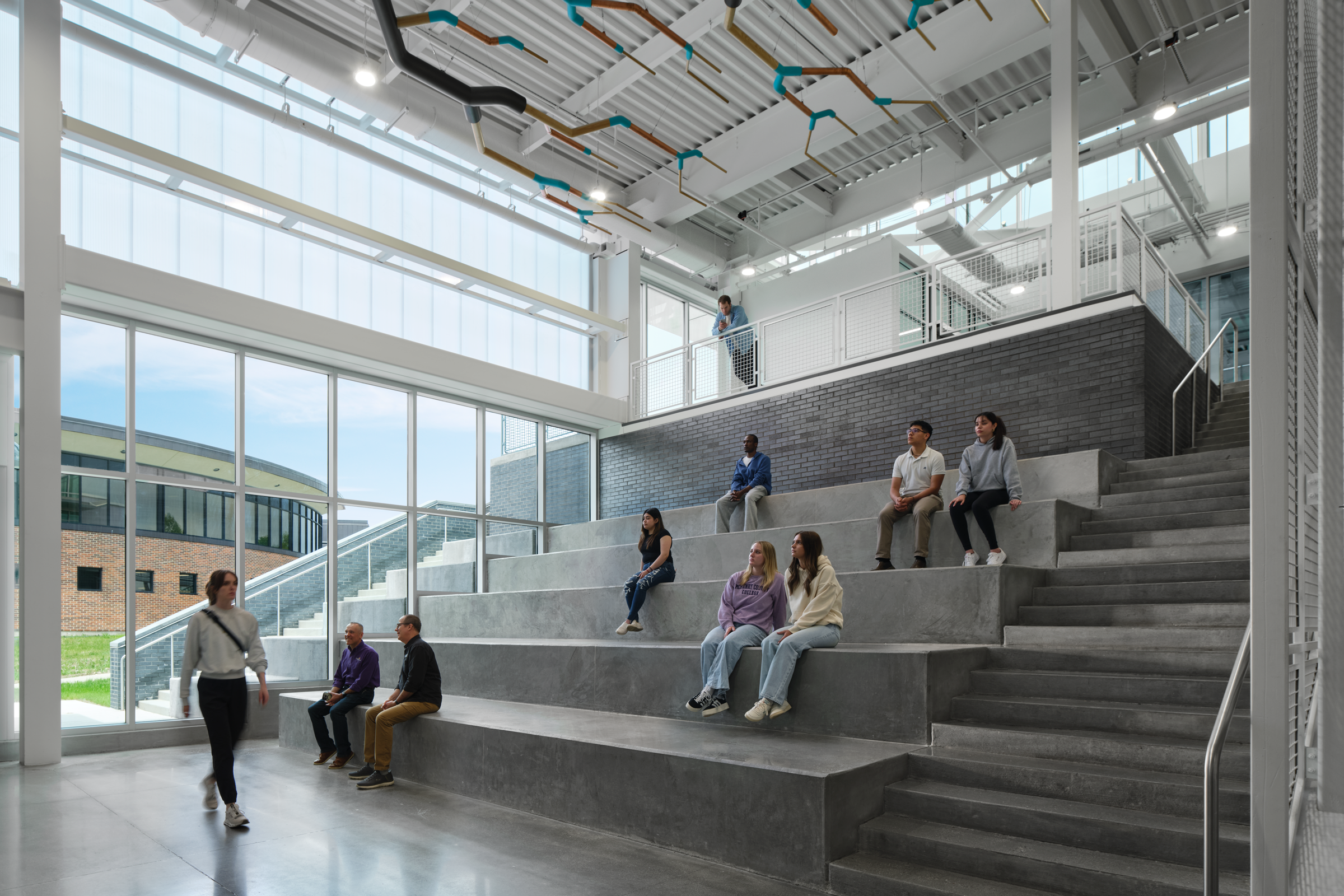Story at a glance:
- Biophilic cities integrate nature into urban planning and design on six levels.
- Urban planners and designers consider numerous metrics to quantify success in creating a biophilic city.
- Seventeen out of 31 designated biophilic cities are located in the US.
In the early 1900s author Ellen Burns Sherman is said to have penned what would become the rationale for biophilic cities more than 100 years later: “The more civilized man becomes, the more he needs and craves a great background of forest wildness, to which he may return like a contrite prodigal from the husks of an artificial life.”
We’ll forgive Sherman for her use of masculine pronouns, written at a time when cities weren’t as numerous as they are today. But we thank her for expressing humans’ innate need for nature, harkening back to our origins as hunters and gatherers.
Today biophilic urbanism is the manifestation of bringing nature into urban downtowns and neighborhoods that may or may not be green cities running on renewable energy. Biophilic design, too, is increasingly a must for design teams. In this article we explore what biophilic cities look like in the US. But first, what does biophilia mean?
What is Biophilia?
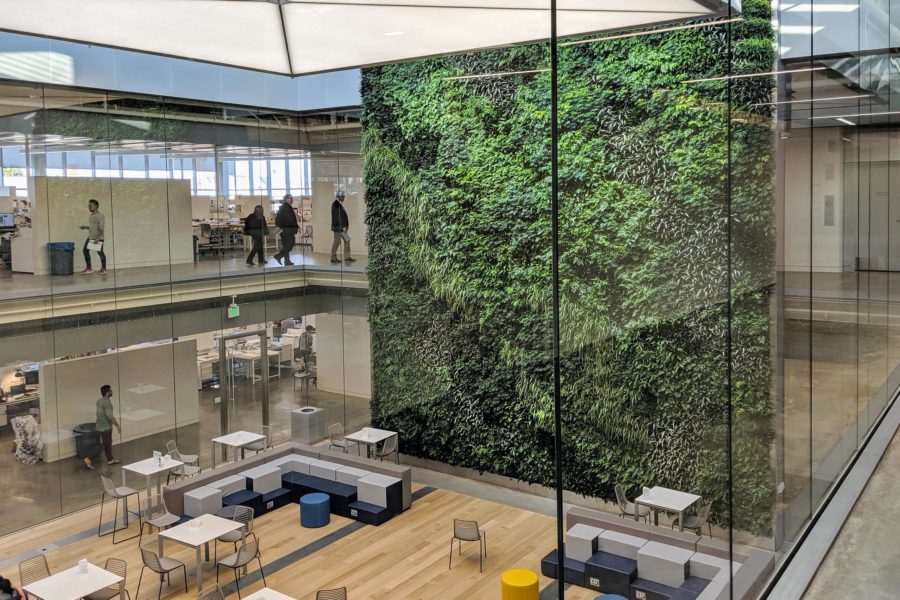
Biophilic designs, like large living walls, add beauty and wellness to offices, universities, restaurants, and more. Photo courtesy of Sagegreenlife
In 1984 E.O. Wilson, famed biologist known as the father of biodiversity, wrote a thin book titled Biophilia, in which he expressed his lifelong love of and fascination with the natural world. Wilson defined biophilia as “the innately emotional affiliation of human beings to other living organisms. Innate means hereditary and hence part of ultimate human nature.”
In other words, connection to nature and other life forms is hardwired into humans. To deny that by isolating ourselves in cities made of concrete, asphalt, and steel is like denying our true nature and bound to result in problems on personal and societal levels.
“There’s an innate need to be exposed to nature,” Darren Mende, CEO of Sagegreenlife, told gb&d in a previous interview. “If you can bring that back into any one of these environments and make that space better, it’s such a no-brainer.” His company creates Biotiles, containing up to 16 species of plants as interior and exterior living walls.
Biophilic design is more than greenery, experts say. “Less obvious aspects of biophilic design include space layout,” wrote Maria Papiez, director of sustainable design for EwingCole, in a previous article for gb&d. “We may not cognitively recognize certain layouts as ‘natural,’ but they are also innate to us. For example, having places of refuge and comfort and seeing out into the space around us allow inhabitants to relax and reduce stress levels.”
In the preface to Timothy Beatley’s groundbreaking 2008 book Biophilic Cities: Integrating Nature into Urban Design and Planning, Wilson laments our situation: “It is not so much that humanity has destroyed a large part of the natural world and withdrawn from the remainder. We have also expelled it needlessly from our daily lives.”
At the same time Wilson offers the solution to our nature disconnect: “Beautiful, benevolent, and soul restoring, nature waits for us to bring her home.”
How can we bring nature into urban population centers, and who will do it?
What is a Biophilic City?
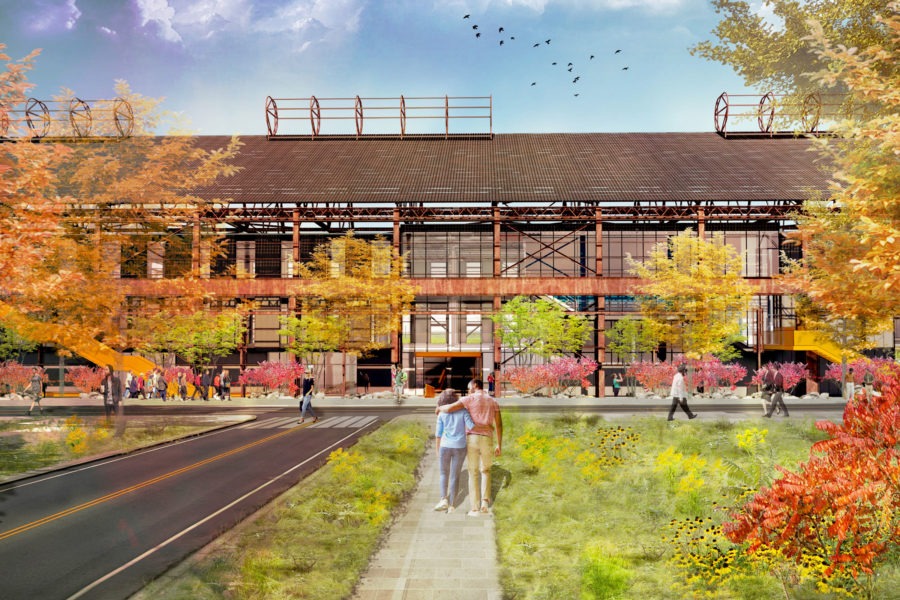
Hazelwood Green, a 178-acre site in southeast Pittsburgh, is a former industrial area being reinted with biophilic design and green energy strategies. Rendering courtesy of Ten X Ten
In his writings Beatley describes a biophilic city as a place “abundant with nature, a city that looks for opportunities to repair and restore and creatively insert nature wherever it can. It is an outdoor city, a physically active city, in which residents spend time enjoying the biological magic and wonder around them. In biophilic cities residents care about nature and work on its behalf locally and globally.”
In biophilic cities nature is the centerpiece around which city living revolves. Nature is not merely an add-on tucked away in hidden corners or the pretty facade on tall buildings.
Beatley has said a biophilic city “ … is even more than simply a biodiverse city: it is a place that learns from nature and emulates natural systems, incorporates natural forms and images into its buildings and cityscapes, and designs and plans with nature.”
For Beatley a biophilic city exists on six dimensions of a built environment. These are (moving from smallest to largest):
- Buildings
- Blocks
- Streets
- Neighborhoods
- Communities
- Regions
The notion of biophilia deeply embedded across all layers of a city has been a traditional part of urban design. “By observing and listening we can learn from nature and see how it will be seamlessly incorporated. This approach is not new; it is a return to how towns, neighborhoods, and communities were traditionally planned around the advantages the land and natural environment provided. Now we’re seeing more of a return to that approach in today’s industry,” wrote Christopher Janson, an architect and urban designer at LRK, in a previous article for gb&d.
In his 2016 Handbook of Biophilic Planning and Design, Beatley provides more detail on the key characteristics of biophilic cities. Defining highlights of urban biophilic oases include:
- “Natureful” places of abundant nature and natural experiences
- Interconnected and integrated natural spaces with the built environment
- Places that embrace the blue (marine and aquatic) as well as the green (terrestrial)
- Relationships with the small and the large (microscopic to celestial worlds)
- Places where city dwellers care for nature on local, national, and global levels
How Can the Success of a Biophilic City be Measured?
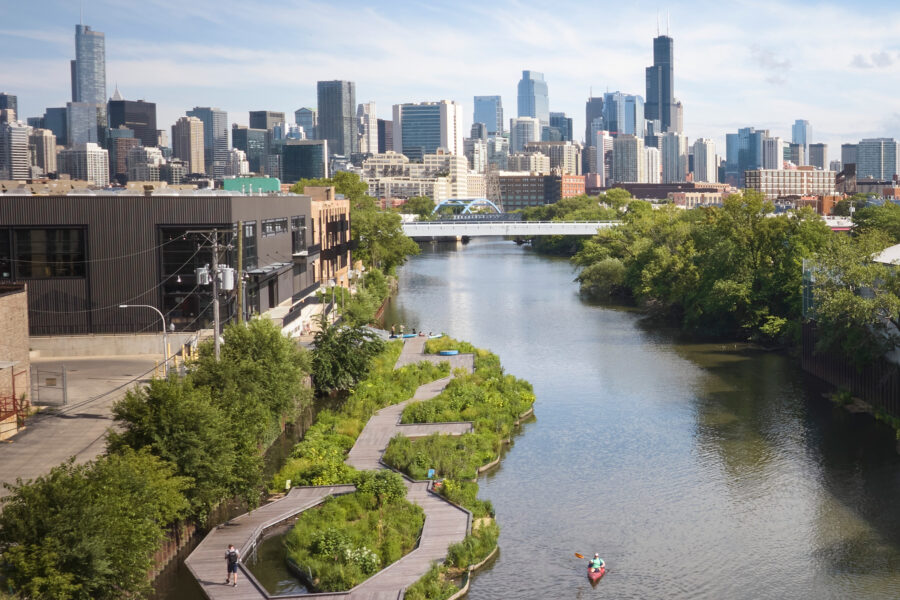
When complete, the Wild Mile in Chicago is designed to be a 17-acre floating eco-park. Photo by Dave Burk
The ultimate goal for urban designers or planners is to construct a city where the six levels of a built environment given in the preceding section mutually reinforce various biophilic habits and activities of city dwellers.
As empirical evidence of their success in creating a biophilic city, Beatley suggests several ways city officials can measure the biophilia of residents. They may quantify the percentage of:
- The city population living within 300 feet of a park, green space, or community garden
- City land area that can be designated as wild or semi-wild
- Residents who are active in nature or outdoor clubs
- Time residents spend outside
- Inhabitants who can recognize common species of native plants and animals
- City-funded biophilic projects or initiatives
- The urban budget earmarked for nature conservation, recreation, education, or programs for city residents
What is the Biophilic Cities Project?
Beatley launched the Biophilic Cities Project in 2011 to raise awareness of biophilic cities especially among city officials and urban planners and designers. The Biophilic Cities Network debuted a year later with the objective of forming a global alliance of biophilic cities and interested organizations or individuals working to bring their biophilic vision to life.
To share knowledge and experiences, the group launched the Biophilic Cities Journal in 2017. Currently there are 31 biophilic cities throughout the world.
What are the Biophilic Cities in the US?
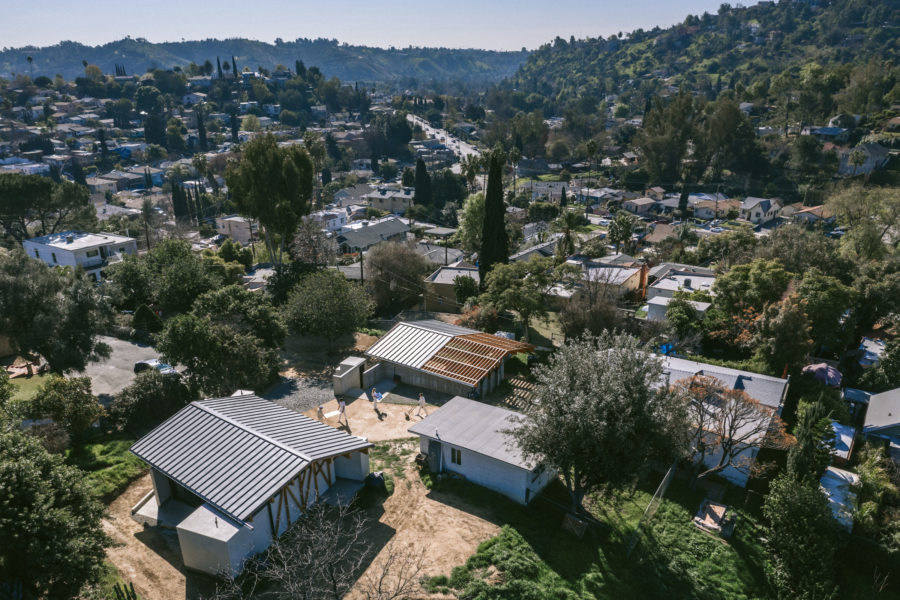
Los Angeles Design Group rethinks working from home with this creative residential complex. Photo by Saam Gabbay
According to the Biophilic Cities Network in May 2024, these are the biophilic cities in the US:
- Arlington, VA
- Austin,TX
- Birmingham, AL
- Kansas City, MO
- Los Angeles, CA
- Miami-Dade, FL
- Milwaukee, WI
- Norfolk, VA
- Phoenix, AZ
- Pittsburgh, PA
- Portland, OR
- Raleigh, VA
- Reston, VA
- Richmond, VA
- San Francisco, CA
- St. Louis, MO
- Washington, D.C.
What are the Benefits of Biophilic Cities?

Rendering courtesy of EwingCole
The evidence supporting the truth of biophilia is already impressive and growing all the time. Major benefits of living in biophilic cities include:
Medical. One published study shows hospital patients after gallbladder surgery had speedier recoveries and needed less pain medication when their room window opened to a nature scene vs. a brick wall.
Social. Studies documenting the role of positive interactions in urban green space as catalyst for social cohesion and social capital are becoming more common.
Psychological. Comparing mental states between people on a nature walk and those in a shopping mall, researchers found 71% of nature walkers reported a decrease in feeling tense while 50% of mall walkers said they felt an increase in tension.
Pedagogical. Another study documents the improvements in learning and behavior in children involved in school gardens.
Economic. A report by CEOs for Cities found urban home values increased by up to $34,000 when they were in more walkable neighborhoods.

